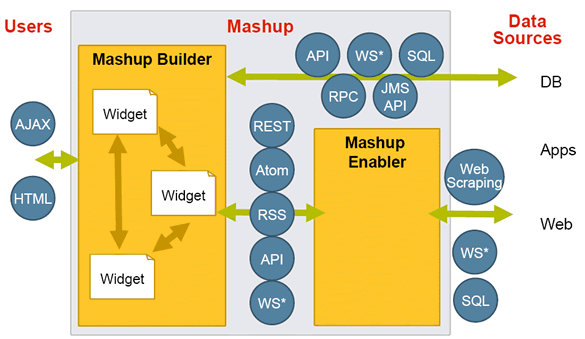In the 50s a black leather jacket, smoking, pink cars and greasy hair was cool. None of that will get you far in a Web 2.0 crowd. As in all crowds only very few acctually knows what they are talking about and the rest are faking it (I am not, I promise, I really really belong!!!!). The trick is of course to sound like you know what you are talking about, and the rest does not matter that much (that is good old Marketing 1.0 or How-to-survive-High-School 1.0). Just follow the 5 tips below and you will be considered cool by any Web 2.0 crowd. A bit of a warning though, it won’t get you chicks and the chances it is going to land you a job outside of Sillicon Valley are slim to none.
1. Know when to be new school and when to be old school
Adobe Apollo is now named Adobe AIR, where AIR stands for “Adobe Integrated Runtime” (this means that the name includes Adobe twice, what a great feat or marketing!). Right now the correct thing to call Apollo is AIR, since that shows that you are hip to what’s happenin’ (forgive my non-techie slang here, it might be a bit out of date). However, in a few months when Adobe throws all it’s marketing might behind the name AIR, you should once again start using the name Apollo. That will show that you are old school cool and don’t care about marketing dollars. From new school to old school in a few months, that took Hip Hop years to achive.
2. Social X 2.0
Use the word “social” and “2.0” for everything, it does not have to make sense. These buzz words of the day will soon go out of style since all kinds of uncool Media 1.0 are talking about it, but for now it is the in thing to use. It is a bit like the Dilbert mission statement generator, just take an existing term and add Social in the start and 2.0 in the end and voilá, you’re cool. For example “Social Work 2.0”, “Social Search 2.0”, “Social Latte-Grande-with-an-extra-shot-of-expresso 2.0”. To be extra cool you might wanna start mentioning “Web 3.0” – it is such a badly defined term that it can be used for anything from the full semantic web to the latest improvements on Flickr, very practical.
3. The Power of the T-Shirt
T-Shirts have worked well for many generation of Geeks. Power of the Sys Admin is displayed by the wild beard, the pizza built body and, most importantly, the dirty and worn “Linux Rules” T-Shirt. ThinkGeek has built a good business on this fact, and Threadless is doing the same thing for the “damn I am creative, I have a Mac and I understand the inside joke” crowd. Everyone has blogs (at least everyone that will read this), everyone has accounts at the lastest cool sites, but not everyone has the T-Shirt from just that event. The Social Events 2.0 (yay, I got a cool point there, see how easy it is) now has unique T-Shirts where you can add your own little personalization sentence. That was the thing both at the Web 2.0 Expo a at JavaOne (bonus tip: mention the events you’ve gone to lately) and it was really popular. T-Shirts can show the pure mortals that have only read about Web 2.0 in Times Magazine that you are a hard core Geek 2.0!
4. Use a Mac and make off-hand comments about it
This is not as complicated as it sounds. It involves using a Mac, but you have to keep from making the blank-eyed-freaky-smile-all-with-Mac-is-wondeful-and-Steve-Jobs-is-my-God statements all the time. Instead just happen to mention every know and then how great that latest Mac utility you found is and how much time is saves when you do [insert technical babbel here]. For extra coolness just end the sentence with mumbling a bit about “or maybe you don’t have a Mac…”. A given is to just happen to mention how great a Mac is to use when you are using Ruby On Rails, that is 2 coolness points for the price of one.
Disclosure: I don’t use a Mac (but I do own a fully working Mac Classic II)
5. Get in on those Beta programs and use them as if you were Social Machiavelli 2.0
Register for all beta programs you can, the earlier the better, they are the currency of Economy 2.0 (to really beat the 2.0 analogy to death). Once a beta has been mentioned on TechCrunch your hard work will have paid off because you can just happen to forward to article to your “friends” (term used loosely), of course via Jaiku (Twitter is soooo over), and mention that you do not agree with what Michael Arrington is writing (bonus tip: dont refer to TechCrunch, refer to Michael Arrington, this buys you some cool) and you should know since you have tested the mentioned app for a few weeks.
By the way, I have a Microsoft Popfly beta account and I don’t agree with whatever Micheal Arrington is writing about it!.
A Cry for Help
Let me know if I have missed any key points. I am soon going to Mashup Camp to talk about Social Mashups 2.0 and comparing that to Microsoft Poplfly and, what is then called Adobe Apollo, so I need all the help I can get!
